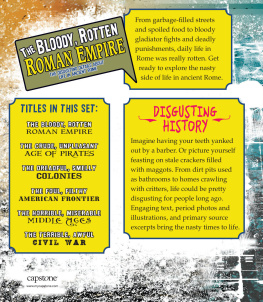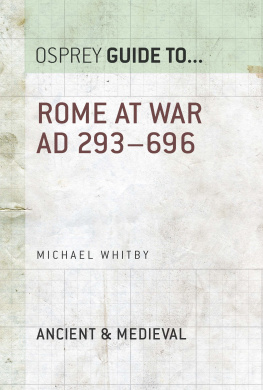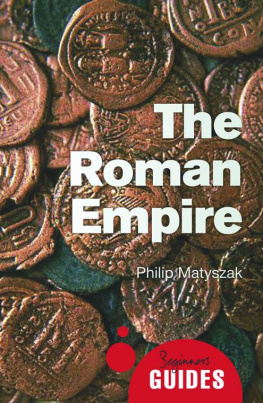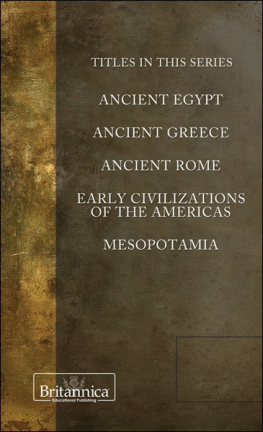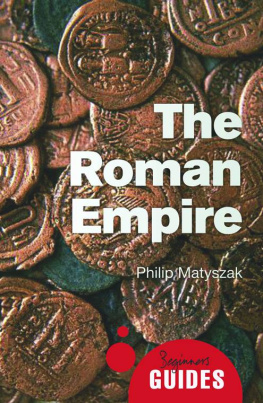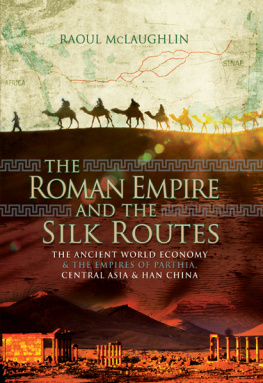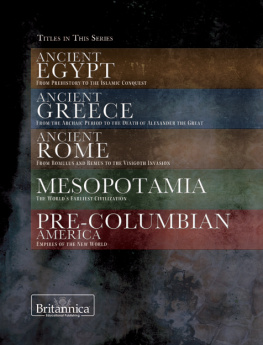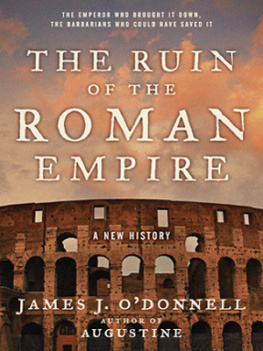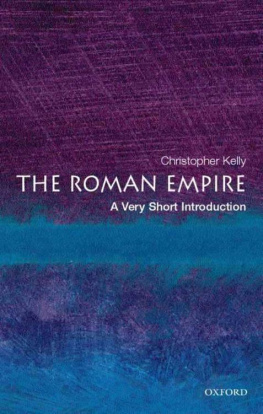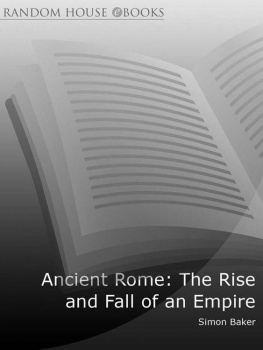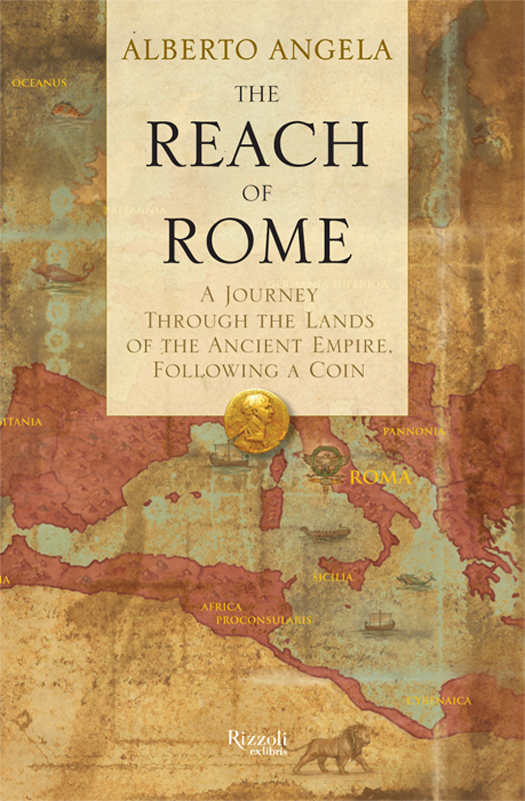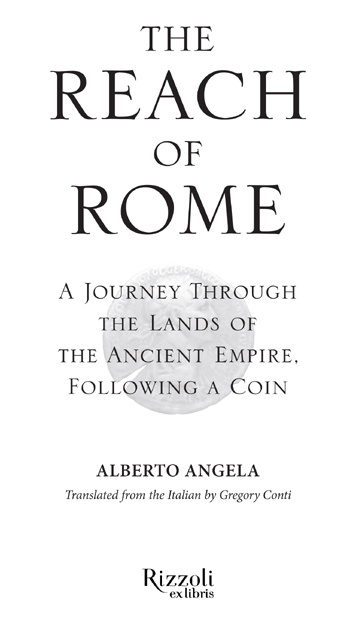Also by Alberto Angela
A DAY IN THE LIFE OF ANCIENT ROME
INTERNATIONAL PRAISE FOR ALBERTO ANGELA S
A Day in the Life of the Roman Empire
Angelas rigorous research and populist style, aided by Contis seamless translation, should fascinate casual readers as well as dedicated Italophiles.
Publishers Weekly (Starred Review)
A cinematic tour through the apartments and streets of ancient Rome.
Bookslut
Makes an important but often complicated subject fascinating and accessible. He transforms his book into a kind of three-dimensional set in which the reader strolls, visiting homes, markets, open air schools, baths, and even public latrines.
Il Giornale
In this scrupulous portrait of ancient Rome, Alberto Angela breathes life into historys intimate aspects, paying homage to the history made not by great figures but by individuals, those citizens of Rome whose daily habits and energies contributed to the grandeur and power of the Roman Empire.
Agora Magazine
One discovers a wealth of details about the curious habits of ancient Romans, from their recipes to their tastes in interior design, from life in the giant Roman housing projects, to the shocking slave markets.
Corriere della Sera
First published in hardcover in the United States of America in 2013 by Rizzoli Ex Libris,
An imprint of Rizzoli International Publications, Inc.
300 Park Avenue South
New York, NY 10010
www.rizzoliusa.com
This ebook edition 2013 by Alberto Angela
Translation 2013 by Gregory Conti
First published in Italy as Impero: Viaggio NellImpero di Roma Seguendo Una Moneta
2010 by Alberto Angela
2010 Rai Radiotelevisione Italiana, Roma
Arnoldo Mondadori Editore S.p.A., Milano
All rights reserved. No part of this publication may be reproduced, stored in a retrieval system, or transmitted in any form or by any means, electronic, mechanical, photocopying, recording, or otherwise, without prior consent of the publishers.
eISBN: 978-0-8478-4141-7
v3.1
To Monica, Riccardo, Edoardo, and Alessandro
Because my most beautiful journey is the one
I make each day in your eyes
Contents
Preface
Take a look at a map of the Roman Empire at the height of its territorial expansion. What strikes you most is how vast it is. It stretches from Scotland to Kuwait, from Portugal to Armenia.
What was is like to live in this world? What kind of people would we have met in its cities? How were the Romans able to create such a great empire, uniting peoples and places that were so diverse? The aim of this book is to take you on a journey through the Roman lands to find the answers to these questions.
Perhaps you are reading this after having read my previous book on Rome, A Day in the Life of Ancient Rome: an hour-by-hour exploration of daily life in the capital city. I had imagined that typical day as being a Tuesday during the reign of the emperor Trajan.
Now imagine that you are waking up the following day, a Wednesday, and that you are about to leave on a journey that will take you through the entire empire. A journey where you will breathe the atmosphere of exotic places, the smells in the alleyways of Alexandria, Egypt, the fragrances used by the noblewomen strolling on the streets of Milan; where you will hear the sound of hammers and chisels at work in a stonecutters shop in Athens; and where you will see the painted shields of legionnaires on the march in Germany and the painted bodies of the barbarians on the empires northern border in Scotland.
When I was preparing to write this book, I wondered what kind of story line I could use to guide us on a journey like this through the Roman Empire.
I thought of a coin. A sestertius (or sesterce), to be exact. In fact, by following the peregrinations of a coin as it continually changes hands, it is possible, in theory, to reach any point in the empire within the span of a few years (even as few as three). And, even more important, by following the people who take turns possessing the coin, we can discover their faces, their experiences, the world around them, their homes, their ways of life, their customs and habits.
So we will pass from the hands of a legionnaire into those of a member of the landed nobility; from the hands of a slave to the hands of a surgeon trying, by way of a most delicate operation, to save the life of a baby boy; from a wealthy trader in garum (the famous sauce so loved by the ancient Romans) to a prostitute; from a singer, at risk of dying in a shipwreck in the Mediterranean, to a sailor, all the way up to the emperor. And lots of others.
Obviously, our journey will be imaginary, but nevertheless it is totally plausible. The people you will meet are, with few exceptions, people who actually lived in that same period and almost always in the same places. Their names, occupations, and personal details are real, the fruit of a long labor of research using tombstones, inscriptions, and ancient texts. We even know what many of our characters looked like, thanks to the so-called Fayum portraits, an extraordinary collection of paintings found in Egypt by archaeologists and dating back to the first centuries after Christ, to the very same period in which our journey takes place. They are portraits of ordinary people that would be hung on the walls in the subjects homes and then applied, after their deaths, to their mummies. Several of the characters in this book are directly inspired by them.
And so, almost by magic, on the streets of a city, in the back alleys of a port, on the deck of a ship, we will come upon their ancient, but no less familiar, faces. And the spark shining in their eyes will illuminate our view of a little piece of the culture and daily life of their era.
In the same way, the dialogue that youll hear pronounced by some of our ancient Romans is almost always original, taken from famous works written by Latin writers such as Martial, Juvenal, or Ovid.
My intention has been to provide as realistic an idea as possible of the era, its people, and its places. If, for example, during Trajans reign the North African city of Leptis Magna still didnt have the great baths built just a few years later by Hadrian, then you wont see them as you follow the sestertius on your tour of the city.
At times, the writing style will be very much like fiction, but every place, every climate, every monument, every landscape that youll discover during your reading has been carefully documented in ancient sources and archaeological studies so as to be described in the book as it was seen and experienced by the ancient Romans. If there are any errors in this regard, I ask my readers to accept my apologies.
What I hope to do in these pages, in fact, is to help readers immerse themselves in the reality of daily life in the ancient world. And I want to present lovers of history and archaeology with the tidbits and sensations that are not usually described in books, like the smell of the crowd gathered to watch the chariot races in the Circus Maximus or the arabesques of light projected by the latticework of the windows.
Given that we cannot know everything exactly as it happened during the few years of our journey (which concludes in 117 CE ), it has been necessary in some very rare cases to make adjustments. At times, an incident may have actually happened in an era slightly earlier or later than the moment in which Ive placed it, but even in those cases it is completely plausible that the incident could have happened during our journey.



